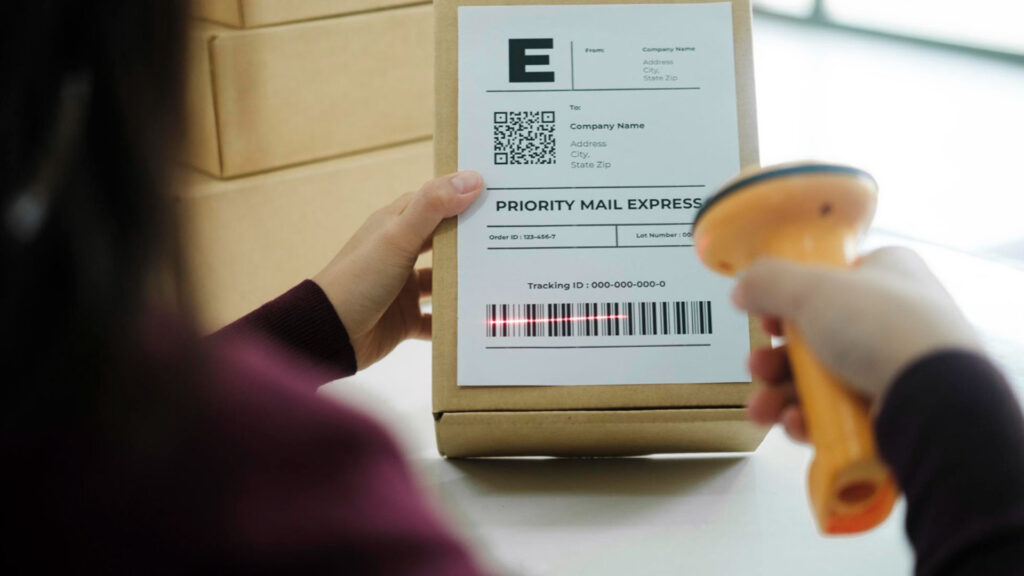How does warehouse labeling contribute to inventory accuracy and management? Labeling in Warehouse is a critical aspect of effective inventory management and logistics operations. It involves the strategic placement of labels or tags on products, racks, shelves, and other storage locations within a warehouse or distribution center. In this blog, we will explore the importance of warehouse labeling, key elements of an effective labeling system, and best practices for implementing labeling strategies.
A Look Into Warehouse Labeling
How does labeling work in Warehouse? Let us check it. It is a process of using labels or tags to mark and identify various storage locations, products, or items within a warehouse or distribution center. It involves the use of visual cues such as labels, barcodes, or RFID tags to provide essential information and facilitate efficient tracking, organization, and retrieval of goods within the warehouse.
What is the purpose or objective of this process? The primary purpose of warehouse labeling is to enhance operational efficiency by enabling quick and accurate identification of storage locations and inventory items. It helps warehouse personnel locate products, navigate aisles, and manage inventory effectively. Warehouse labels typically include information such as item descriptions, SKU numbers, barcodes, batch or lot numbers, and other relevant identifiers.
The Importance of Warehouse Labeling

Why is warehouse labeling important in a logistics operation? We can go through it.
Efficient Inventory Management
Labeling in Warehouse plays a vital role in optimizing inventory management processes. Clear and well-placed labels allow for easy identification and location of products within the warehouse. This enables efficient order picking, stock replenishment, and inventory counting, reducing the time spent searching for items and minimizing errors.
Improved Accuracy
Accurate inventory tracking is essential for avoiding stockouts, preventing overstocking, and ensuring timely order fulfillment. Warehouse labeling provides a systematic way to identify and track items, ensuring that the right products are picked, packed, and shipped to customers. It enhances order accuracy and minimizes the risk of shipping incorrect items.
Streamlined Operations
An effective warehouse labeling system enables smooth workflow and minimizes operational disruptions. Properly labeled storage locations, such as racks and shelves, allow for organized storage and easy retrieval of products. This streamlines the receiving, put-away, and picking processes, improving overall operational efficiency.
Types of Labeling in Warehouses
Location-based Labeling
Location-based labeling involves labeling storage locations within the warehouse to facilitate easy identification and navigation. This type of labeling is typically used for racks, shelves, bins, or aisles. Some common methods of location-based labeling include:
Rack Labels
Labels are placed on the vertical beams of storage racks to identify specific sections or levels.
Shelf Labels
Labels placed on the front edge of shelves indicate the specific location or range of products stored on that shelf.
Bin Labels
Labels attached to storage bins or containers to identify the contents or indicate specific picking zones.
Aisle Labels
Labels placed on the ends of aisles or overhead to identify different aisles and guide navigation within the warehouse.
Product-based Labeling
Product-based labeling involves labeling individual products or items to provide essential information and enable efficient tracking within the warehouse. Some common methods of product-based labeling include:
SKU Labels
Labels with unique stock-keeping unit (SKU) numbers that provide information such as product description, barcode, or other identifiers. These labels are typically placed on individual items or packaging.
Batch Labels
Labels are used to identify items belonging to a specific batch or lot. They often include information such as manufacturing date, expiration date, or batch number.
Serial Number Labels
Labels are used to identify and track individual items with unique serial numbers. This type of labeling is commonly used for high-value or serialized products.
Zone-based Labeling
Zone-based labeling involves labeling different zones or areas within the warehouse to define specific functional areas or storage categories. This helps in organizing inventory and guiding warehouse personnel during the picking and stocking processes. Examples of zone-based labeling include:
Receiving Area Labels
Labels are used to identify designated areas for receiving incoming shipments and staging them for further processing.
Pick and Pack Zones
Labels placed on specific areas within the warehouse to designate different pick and pack zones. This helps streamline order fulfillment processes and minimize picking errors.
Storage Zones
Labels are used to differentiate storage areas within the warehouse based on factors such as product type, temperature requirements, or storage capacities.
Benefits of Warehouse Labeling

Enhanced Efficiency
Clear and visible labels enable warehouse personnel to quickly locate and retrieve items, minimizing search times and improving overall operational efficiency.
Accurate Inventory Management
Proper labeling helps ensure accurate inventory tracking, reducing errors in stock counts, order picking, and replenishment activities.
Improved Safety
Labels indicating hazardous or sensitive materials alert warehouse staff to handle items with caution, ensuring compliance with safety regulations.
Clearly labeled storage locations and aisles help guide personnel and minimize confusion, facilitating smoother movement within the warehouse.
Elements of an Effective Warehouse Labeling System
Clear Identification
Labels should contain essential information such as product names, SKUs, barcodes, or QR codes. These identifiers should be easily readable and scannable for quick and accurate identification.
Location Labeling
Each storage location, such as bins, racks, or shelves, should be clearly labeled. Consistent placement of location labels across the warehouse enables easy navigation and minimizes confusion.
Color Coding
Color coding can enhance the efficiency of warehouse operations by visually categorizing products or indicating specific storage zones. For example, using different colors for products with high demand or prioritizing perishable items can expedite order picking and improve inventory control.
Conclusion
In conclusion, Warehouse labeling is a critical component of efficient inventory management and logistics operations. By implementing a well-designed labeling system, businesses can enhance efficiency, accuracy, and traceability within their warehouses. Clear identification, consistent location labeling, and the use of barcode or QR code technology are key elements of an effective labeling system. Following best practices and regularly maintaining labels ensure their durability and legibility over time. By prioritizing this process, businesses can streamline their operations, minimize errors, and optimize inventory management for improved productivity and customer satisfaction.
By partnering with Galaxy Freight for warehouse labeling, you can optimize your logistics operations, improve inventory accuracy, and enhance overall efficiency. Their expertise in logistics and commitment to quality will ensure that your warehouse labeling meets industry standards and supports seamless supply chain operations.
If you’re interested in learning more about Galaxy Freight’s warehouse labeling services or have specific questions regarding your labeling needs, don’t hesitate to reach out to them for further information.



